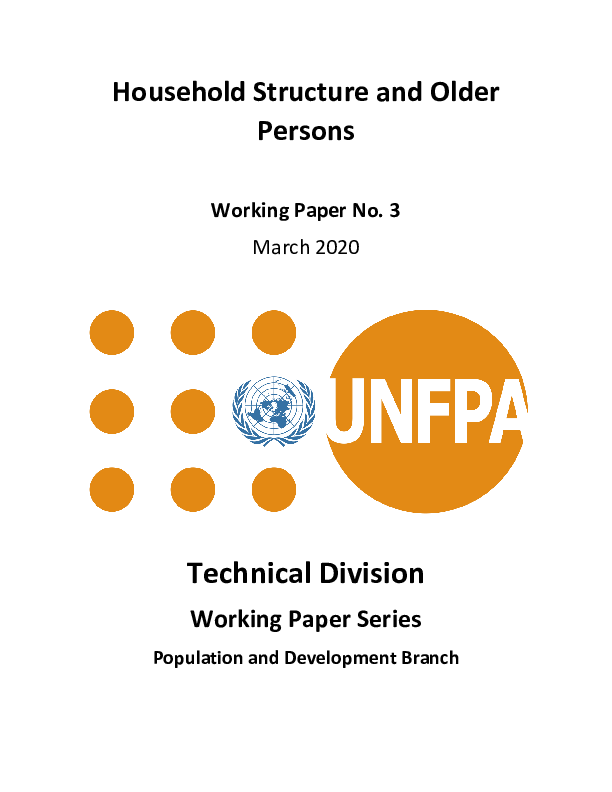
Resources
Household Structures and Older Persons
Resource date: Mar 2020
Author: Sainan Zhang, Sandile Simelane, Tapiwa Jhamba, Rachel Snow
Publisher: UNFPA

Resources
Resource date: Mar 2020
Author: Sainan Zhang, Sandile Simelane, Tapiwa Jhamba, Rachel Snow
Publisher: UNFPA
Household structures and relationships within households have become increasingly important for policy analysis as they have implications for example on support and welfare. This working paper provides a brief overview of concepts used to define household structures, evidence of changing household structures in 76 countries from all regions of the world, and the trends in the living arrangements of older people aged 60 years and above. It explores the life circumstances of older persons, including those who live alone, analyzing changing household structures and sociodemographic characteristics. The analysis is based on harmonized international census data obtained from the Integrated Public Use Microdata Series (IPUMS) at the University of Minnesota. The results presented in the working paper can be crucial to supporting policies that respond to the needs of older persons, including the special attention they require in the context of the COVID-19 pandemic, as they are disproportionately more likely to suffer severe COVID-19 outcomes. It also supports the operationalization of the Madrid International Plan of Action on Ageing and the realization of United Nations Principles for Older Persons, and within the broader framework of the Programme of Action of the International Conference on Population and Development.
This document is part of UNFPA’s technical working paper series.
Paper No. 1 in this series is: Policy responses to low fertility: How effective are they?
Paper No. 2 in this series is: Low fertility: A review of the determinants